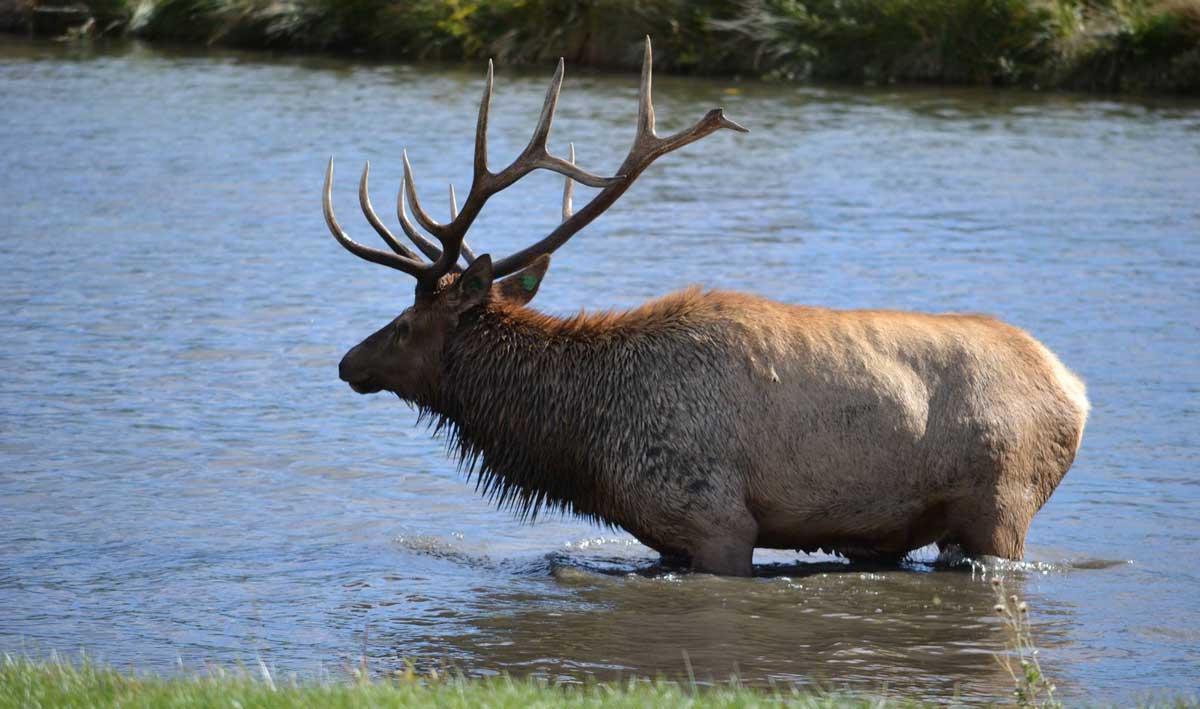All cervids are excellent swimmers. Hollow hair and rich fat help make elk buoyant and insulate them from the danger of hypothermia in frigid waters.
Yearly migration routes—particularly in mountainous areas—often require elk to cross creeks and rivers swollen from spring run-off. Calves only a few days old can navigate substantial rivers but may require days of coaxing before they’ll take the plunge. Reintroduced elk on Afognak Island in Alaska have been known to swim three miles to nearby Kodiak Island.
While being pursued by wolves, elk may retreat into waterways that largely protect them from predation. Native Americans, such as the Salish of Puget Sound, long took advantage of this tendency, driving elk into the sea with dogs and fire before clubbing them from canoes.
An elk’s natural endurance—from generations of fleeing predators in open country—allows it to power through long distances or rough waters. Of course, sometimes elk simply take a refreshing dip to cool off in the summer.
Photo c/o Faith Marlin
Elk NetworkAre Elk Good Swimmers?
Conservation | March 30, 2018

Latest Content
Oregon’s Wildlife, Hunting Heritage Get $5 Million Boost
MISSOULA, Mont. — The Rocky Mountain Elk Foundation and various partners allotted $5,083,371 in 2024* to enhance wildlife habitat, bolster wildlife management and support youth [...]
Storm’s Silver Lining Helps Feed Michigan Elk
There’s often a silver lining to every storm. Sometimes, you just have to look to find it. In late March 2025, an historic ice storm [...]
Why Elk Have Different Colored Ear Tags
Below is a Facebook post from the Arizona Game & Fish Department (AZGFD). “Why does AZGFD collar animals, like elk? What do the different-colored ear [...]